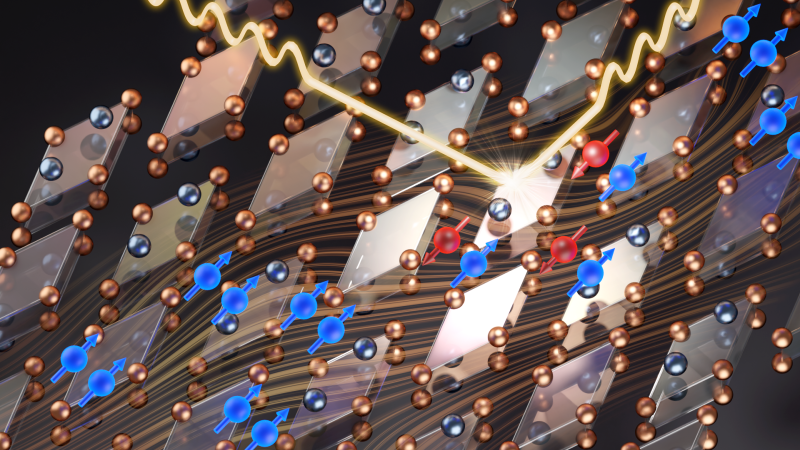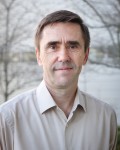Article courtesy of Rice University, by Jade Boyd
HOUSTON – Dec. 22, 2021 – A Rice University-led study is forcing physicists to rethink superconductivity in uranium ditelluride, an A-list material in the worldwide race to create fault-tolerant quantum computers.
Uranium ditelluride crystals are believed to host a rare ‘spin-triplet’ form of superconductivity, but puzzling experimental results published this week in Nature have upended the leading explanation of how the state of matter could arise in the material. Neutron-scattering experiments by physicists from Rice, Oak Ridge National Laboratory, the University of California, San Diego (UCSD) and the National High Magnetic Field Laboratory at Florida State University revealed telltale signs of antiferromagnetic spin fluctuations that were coupled to superconductivity in uranium ditelluride.
Spin-triplet superconductivity has not been observed in a solid-state material, but physicists have long suspected it arises from an ordered state that is ferromagnetic. The race to find spin-triplet materials has heated up in recent years due to their potential for hosting elusive quasiparticles called Majorana fermions that could be used to make error-free quantum computers.
“People have spent billions of dollars trying to search for them,” Rice study co-author Pengcheng Dai said of Majorana fermions, hypothetical quasiparticles that could be used to make topological quantum bits free from the problematic decoherence that plagues qubits in today’s quantum computers.
“The promise is that if you have a spin-triplet superconductor, it can potentially be used to make topological qubits,” said Dai, a professor of physics and astronomy and member of the Rice Quantum Initiative. “You can’t do that with spin-singlet superconductors. So, that's why people are extremely interested in this.”
Superconductivity happens when electrons form pairs and move as one, like couples spinning across a dance floor. Electrons naturally loathe one another, but their tendency to avoid other electrons can be overcome by their inherent desire for a low-energy existence. If pairing allows electrons to achieve a more sloth-like state than they could achieve on their own -- something that’s only possible at extremely cold temperatures -- they can be coaxed into pairs.
The coaxing comes in the form of fluctuations in their physical environment. In normal superconductors, like lead, the fluctuations are vibrations in the atomic lattice of lead atoms inside the superconducting wire. Physicists have yet to identify the fluctuations that bring about unconventional superconductivity in materials like uranium ditelluride. But decades of study have found phase changes -- watershed moments where electrons spontaneously rearrange themselves -- at the critical points where pairing begins.
In the equations of quantum mechanics, these spontaneous ordered arrangements are represented by terms known as order parameters. The name “spin triplet” refers to the spontaneous breakdown of three symmetries in these ordered arrangements. For example, electrons spin constantly, like tiny bar magnets. One order parameter relates to their spin axis (think north pole), which points up or down. Ferromagnetic order is when all spins point the same direction, and antiferromagnetic order is when they alternate in an up-down, up-down arrangement. In the only confirmed spin-triplet, superfluid helium-3, the order parameter has no fewer than 18 components.
“All other superconductivity is spin singlet,” said Dai, who’s also a member of Rice’s Center for Quantum Materials (RCQM). “In a spin singlet, you have one spin up and one spin down, and if you put a magnetic field on, it can easily destroy superconductivity.”
That’s because the magnetic field pushes spins to align in the same direction. The stronger the field, the stronger the push.
“The problem with uranium ditelluride is the field required to destroy superconductivity is 40 Tesla,” Dai said. “That’s huge. For 40 years, people thought the only possibility for that to occur is that when you put a field on, the spins are already aligned in one direction, meaning it’s a ferromagnet.”
In the study, Dai and Rice postdoctoral research associate Chunruo Duan, the study’s lead author, worked with Florida State co-author Ryan Baumbach, whose lab grew the single crystal samples of uranium ditelluride used in the experiment, and UCSD co-author Brian Maple, whose lab tested and prepared the samples for neutron-scattering experiments at Oak Ridge’s Spallation Neutron Source.
“What the neutron does is come in with a particular energy and momentum, and it can flip the Cooper pair spins from an up-up state to an up-down state,” Dai said. “It tells you how the pairs are formed. From this neutron spin resonance, one can basically determine the electron pairing energy” and other telltale properties of the quantum mechanical wave function that describes the pair, he said.
The research was supported by the Department of Energy Office of Science’s Office of Basic Energy Science, the Robert A. Welch Foundation, the National Science Foundation and the State of Florida, Arizona State University and the DOE Office of Science User Facility at Oak Ridge National Laboratory’s Spallation Neutron Source.
The Spallation Neutron Source is a DOE Office of Science user facility. ORNL is managed by UT-Battelle LLC for DOE’s Office of Science, the single largest supporter of basic research in the physical sciences in the United States. DOE’s Office of Science is working to address some of the most pressing challenges of our time. For more information, please visit https://www.energy.gov/science/.






